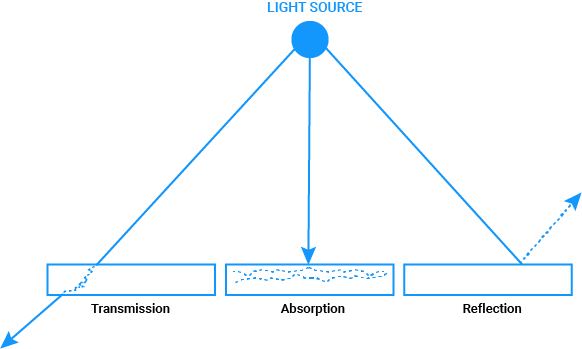
In order to create good materials, a strong understanding of the interaction between surfaces and light in real world is needed. By the simplest definition, light photons hit the surface and act according to the properties of that surface. What affects the appearance of a surface is the structural and optical behavior of it. When light hits a surface, three types of interactions can occur (figure 1).

Figure 1: The three types of light interactions that can occur on the surface of an object.
The combination of these three interactions usually occur. In reality none of these features are 100%. Because the Law of Energy Conservation always works. According to this law, you can not find the material that reflects or absorbs 100% in nature.
Some materials absorb certain wavelengths of light. They also reflect some of them. This effect is called the fluorescence effect. Interaction of the radiance energy to the surface follows the Law of Energy Conservation. Accordingly, the sum of the energies absorbed, transmitted and reflected by a surface equals the sum of the energies coming to the surface. This rule applies separately for each wavelength. So, there is no need to measure these three energy interactions separately. These quantities are determined in ratio to the incoming energy (ie, relative). These ratios are different for each material and surface geometry. However, these ratios seem to be more related to matter structure. Accordingly, for a material surface, these ratios are called absorbance, transmittance, and reflectance, respectively.